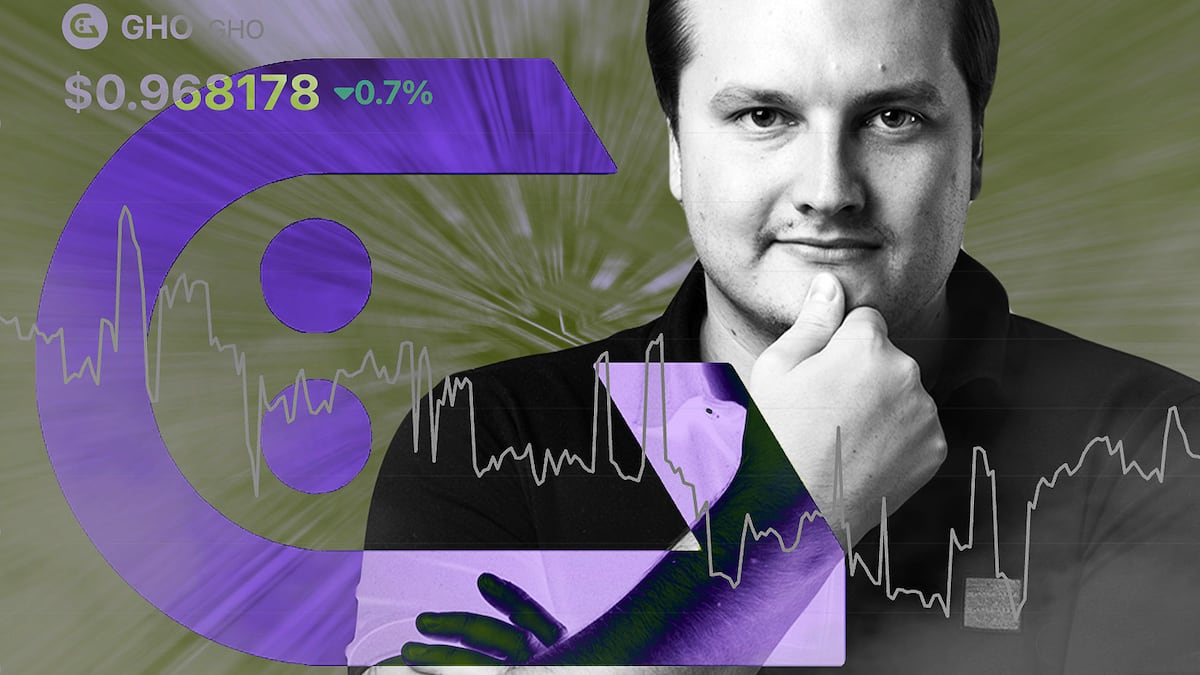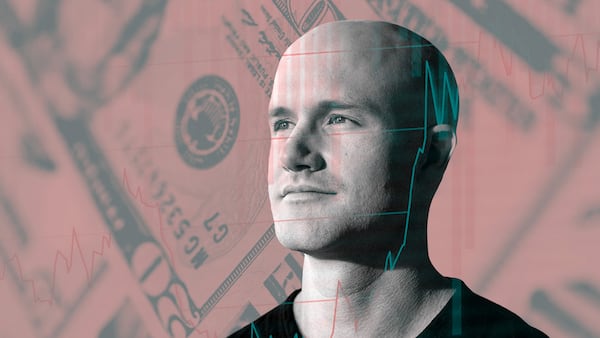- Aave’s new stablecoin has traded between $0.97 and $0.99 since its launch in July.
- Experts blame the performance on a lack of a formal redemption mechanism and weak demand for the new token.
- Aave’s founder says the peg isn’t the priority just yet, and says there’s ample reason to trade with GHO.
DeFi titan Aave’s dollar-pegged stablecoin GHO has traded below its intended $1 price since its July debut, highlighting the challenge of breaking into one of crypto’s most competitive sub-industries.
Stablecoins are meant to be stable — pegged to $1 at all times — but GHO was worth a little more than $0.97 on Tuesday. Since its launch, it has fluctuated between $0.97 and $0.99. It traded as low as $0.94 for a brief moment on August 8.
Stablecoin researchers blame the discount on insufficient demand and lack of a proper redemption mechanism by which holders can swap their GHO for $1 in crypto assets.
“There’s just not enough demand for GHO,” Benjamin Levit, co-founder and CEO at stablecoin research firm Bluechip, told DL News. “The peg hasn’t been restored via arbitrage because GHO doesn’t have an actual arbitrage mechanism to create demand.”
Aave founder Stani Kulechov has defended GHO, arguing it will return to peg when improvements like the GHO Stability Module launch in the coming months.
The GHO Stability Module allows users to mint GHO using other stablecoins as collateral. GHO minted via the GSM can be redeemed for the underlying collateral 1:1, creating an arbitrage opportunity for part of the tokens’ supply.
“The point of the current model is growing debt nominated in GHO, which [has] been growing quite well — almost $20 million. I would say the focus on peg should come later,” Kulechov said Saturday on X, the social media platform formerly known as Twitter.
Kulechov did not immediately return DL News’ requests for comment.
‘No arbitrage’
Creating an asset with stable value that can’t be seized by overzealous law enforcement or regulators is one of the holy grails of the libertarian-leaning industry. Stablecoins provide refuge from crypto’s usual volatility, while allowing traders to remain on the blockchain.
GHO is minted when Aave users borrow it against crypto collateral worth more than the GHO being borrowed. As of Tuesday, there were almost 23 million GHO tokens in circulation.
NOW READ: Aave opens new front in DeFi stablecoin wars as DAO greenlights GHO launch
Austin Campbell, a consultant and adjunct professor at Columbia Business School and former head of portfolio management at stablecoin company Paxos, said the reason for GHO’s de-peg is simple.
‘There’s no arbitrage until the stability model launches.’
— Austin Campbell
“There’s no arbitrage until the stability model launches,” Campbell told DL News.
Buying a stablecoin at a discount and then redeeming it for $1 may seem like a lucrative no-brainer trade, but that redemption mechanism does not exist for GHO, and so there’s no such arbitrage opportunity.
“Right now, you can mint it, but then... sell it in the open market for less than $1?” Campbell said. “That’s not arb.”
Although traders can buy GHO on secondary markets for less than $1 and wait for forthcoming improvements, that isn’t a trivial gamble, Levit said.
“What guarantee is there that the peg will be regained? None, as this isn’t a strong enough incentive — it would be a strategy based on hope,” he said.
NOW READ: A new agency that aims to be the Moody’s of stablecoins just gave Tether a D rating
On the other hand, Aave users who borrow GHO against crypto collateral could, in theory, buy GHO for less than $1 on secondary markets and repay their borrowed GHO at a discount.
But there are two reasons traders likely haven’t been taking advantage of this, Levit said.
First, there’s an opportunity cost.
“If the minter can generate a higher return than $0.03 — assuming GHO is $0.97— by deploying elsewhere, debt repayment is a less preferable option,” Levit said.
Second, those who borrow GHO from Aave against crypto collateral are, in essence, shorting the token, according to Levit.
“If they believe that GHO is unlikely to regain its peg, it’s in their interest not to repay the loans and hope for GHO’s price to drop even further,” he said.
‘To me, it seems that the problem is that there are relatively few people who are able to arbitrage the price up from below $1 since you would have to have already borrowed GHO.’
— Riyad Carey
Riyad Carey, a research analyst at Kaiko, said GHO’s de-peg creates a cycle that mutes demand for the token.
“To me, it seems that the problem is that there are relatively few people who are able to arbitrage the price up from below $1 since you would have to have already borrowed GHO,” he said, “and it doesn’t really make sense to borrow GHO now because its value is less than $1.”
Kulechov said there are still four reasons to borrow and use the token.
The borrowing costs of GHO aren’t higher than other stablecoins, the Aave founder said. And GHO has a liquidity advantage thanks to other DeFi protocols, like Balancer, that have liquidity pools for GHO.
Kulechov also suggested that there may be arbitrage opportunities between GHO and wrapped GHO — the same token in a different format for technical reasons on some protocols — when the latter is used as collateral.
The Aave founder also suggested traders can swap GHO for other tokens like Lido’s wrapped staked Ether and to go “long on the lowest borrow rate.”
Solutions on the way
Aave Companies, the firm behind the Aave protocol, is working on a pair of initiatives that should help restore the token to its peg: the GHO Stability Module and letting Aave users use GHO as collateral when borrowing other stablecoins.
The latter “will enable arbitrage and leveraged positions in cases of under-peg GHO,” Aave delegate Marc Zeller wrote in the protocol’s governance forum, “providing the markets with tools to act on peg-deviation of GHO in both directions.”
Sources told DL News that forthcoming changes will likely make GHO’s 3% discount short-lived.
“[Through] design changes and parameter updates, GHO will be able to maintain its peg in the near future,” Kene, of Aave delegate StableLabs, told DL News.
But its challenge staying at peg highlights a broader issue facing new stablecoins, a crop that includes Curve’s crvUSD, another dollar-pegged token backed by a multibillion-dollar protocol, according to Carey. crvUSD has held its $1 peg since its launch in May.
“I think this speaks to a broader problem for DeFi-native stablecoins; namely, the lack of obvious use cases,” he said. “USDC, USDT, and DAI are already so embedded in the DeFi ecosystem and most liquidity is pooled with these stablecoins.
“That’s not to say that there won’t be in the future, but today it’s not clear that there’s product-market fit.”
Aleks Gilbert is our New York-based DeFi Correspondent. Have a tip about stablecoins? Drop him a line at aleks@dlnews.com.





